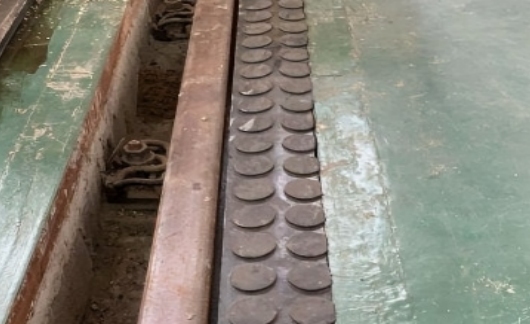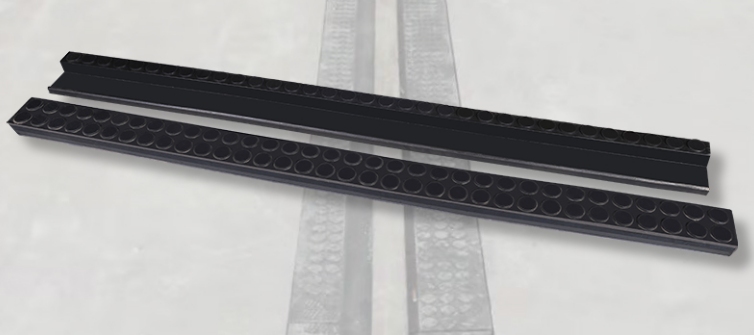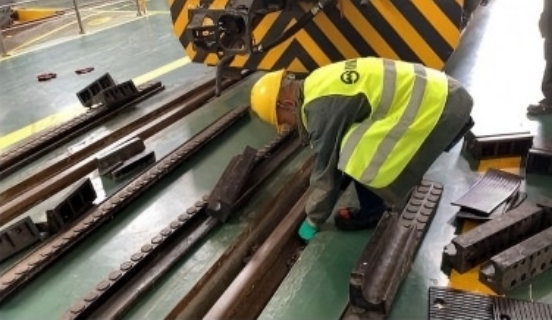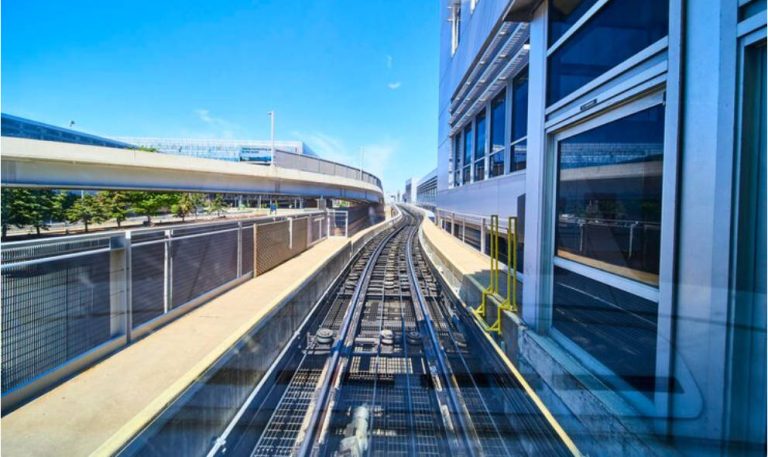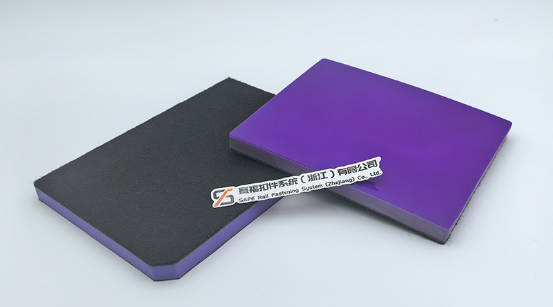Railways always undergo high weight, vibration, and varying climate conditions. In areas with few rail gaps, poor management results in safety issues, high levels of noise, and infrastructure wear. The Safety railway rubber insertion strip is among the important yet often underplayed elements that work towards providing track safety. This article discusses what strips are, where they’re installed, their advantages, and how the SAFE Rail Fastening System provides trustworthy quality and performance.
Understanding Railway Rubber Insertion Strips
What is a rubber insertion strip?
A railway rubber insertion strip is a specially manufactured piece, particularly designed to seal gaps between rails in a track system. Constructed from high-quality, long-lasting rubber, these strips are specifically manufactured to be able to endure the tough conditions of the railway terrain, such as high train loads, temperature changes, and exposure to weather. Through the supply of cushioning rails and gaps, rubber insertion strips keep track geometry in line, dampen vibrations, and avoid structural wear. As a fundamental component of contemporary rail fastening systems, rubber insertion strips facilitate operational safety and passenger comfort.
Where it’s applied to railway tracks
Rubber insertion strips are typically installed where rail gaps occur, such as:
- Rail joints: Where two parts of the rail connect, and tiny expansion gaps are required.
- Switches and crossings: Complicated track sections where the rails cross one another, with the danger of instability.
- Check rails and other essential track elements: Specific alignment and keeping vibrations to a minimum.
Apart from traditional railway tracks, the strips are also used on high-speed rail tracks, subways, and heavy-haul tracks, where stability takes precedence. Smooth movement across varying track sections is guaranteed with correct installation, eliminating misalignment problems.
Why do the gaps need to be filled
Gap conditions that are not filled can generate many issues:
- Vibration and noise increased: Train movement over gaps transfers shocks along the rails, causing passenger discomfort as well as environmental noise.
- Wear and tear in structure: Gaps cause rail wearing to occur faster, resulting in higher maintenance costs as well as decreasing track life.
- Safety hazards: Misaligned or unstable tracks can degrade train stability, particularly at high speeds.
Rubber insertion strips provide a shock absorber that avoids vibrations and keeps track gauges aligned. Not only is this rail protector, but it also equates to a smoother and safer ride for passengers.
Main Advantages of Track Gap Security
Improved Track Stability and Ride Comfort
Rubber insertion strips are a significant contributor to train stability via shock absorption and vibration that occurs while traveling by train. Not only does this absorption strengthen the structural integrity of the tracks, but it also optimizes the comfort for passengers by providing a smoother experience during travel.
Noise and Vibration Reduction
One of the major advantages of employing rubber insertion strips is that they minimize vibration and noise levels. The rubber comes as a dampener, which means that vibrations are minimized as they move through the rails. Less vibration leads to quieter operation, and this is a major advantage in urban environments because there is less noise pollution.
Debris Prevention
Gaps in the track collect stone, leaves, and other debris. Gaps are filled by rubber insertion strips that prevent blocking and ensure safe and smooth train operation.
Durability and Cost-Effectiveness
Well-made rubber strips lower track maintenance intervals due to low rail and fastening system wear. This, in the long run, means lower operating expenses and longer service life for railway infrastructure.
SAFE’s Role in Railway Safety
Who is SAFE?
SAFE Rail Fastening System (Zhejiang) Co., Ltd. produces high-quality rail fastening systems and railway parts. The company has an annual capacity of 5 million sets. SAFE is in the business of manufacturing top-quality products that are up to international standards.
Product Quality and Safety
SAFE rubber insertion strips are made of superior raw materials and precise manufacturing processes. Every strip is exhaustively tested for reliability, uniform performance, and adherence to ISO9001 standards of quality management.
Durability in the Long Run
SAFE products are built with the capability to tolerate severe temperatures, intense traffic, and extended operating pressures. Their durability allows for the safe running of rail tracks while limiting maintenance needs, a cost-effective solution for rail transport operators globally.
Installation and Maintenance Information
How rubber insertion strips are installed
Installation of rubber insertion strips is carried out by tightly wedging them into gaps in the track with specific precision-fitting tools. This is to have the strips tightly secured in place regardless of repeated train movement.
Areas of common application on tracks
Rubber insertion strips are uniformly used in track joints, switches, crossings, etc., wherever there is movement stress. The same application is also made to high-speed rail, metro, and heavy-haul rail, where stability becomes increasingly important.
Tips for best performance maintenance
For best performance:
- Inspect for damage or wear at regular intervals.
- Remove debris from the surrounding area.
- Replace damaged strips at the earliest to avoid safety risks.
Environmental and Operating Benefits
Weather Resistance
SAFE’s rubber solutions have improved weather resistance properties that enable them to work effectively in adverse weather or under undesirable environmental conditions. This resilience capability provides uninterrupted safe operation under any external condition.
Enabling Sustainable Rail Infrastructure
Employing material with less environmental load and high operational efficiency, SAFE enables sustainable rail infrastructure growth across the world. In quality production management, we aim to cater to both the local and international markets ethically.
Cost-Effectiveness
Investment in quality rubber insertion strips, such as those by SAFE, translates into long-term, low-cost solutions owing to the minimal maintenance required by their durability. Quality warranty across production processes is achieved through automated batching.
Conclusion
Railway rubber insertion strips are essential for maintaining track stability, reducing vibration and noise, and protecting rail infrastructure from wear and debris. By filling gaps in joints, switches, and crossings, these strips enhance safety, improve passenger comfort, and extend track life.
SAFE rubber insertion strips, with their high-quality materials, precise manufacturing, and weather-resistant design, provide a reliable and cost-effective solution for a wide range of railway systems. Investing in well-designed rubber insertion strips ensures safer, smoother, and more sustainable railway operations worldwide.
FAQ
Q: What materials are used for railway rubber insertion strips manufacturing?
A: Railway rubber insertion strips are mostly comprised of rugged rubber products that are especially tailored for application on rails. Rubber Products Production lines utilize sophisticated testing machines with comprehensive quality control.
Q: In what way do rubber insertion strips enhance rail safety?
A: By sealing rail gaps, they stabilize rails, minimize vibration and noise, and avoid debris buildup, hence enabling a smoother, safer train ride.
Q: Where are these strips typically installed?
A: Where movement-induced stress is present, i.e., rail joints, switches, crossings, and other locations such as high-speed and metro lines.
Q: Why use SAFE products?
A: SAFE strips are ISO-approved, extensively tested, and manufactured using superior material. They ensure long-term performance, economy, and assured consistency in a wide range of railway applications.

